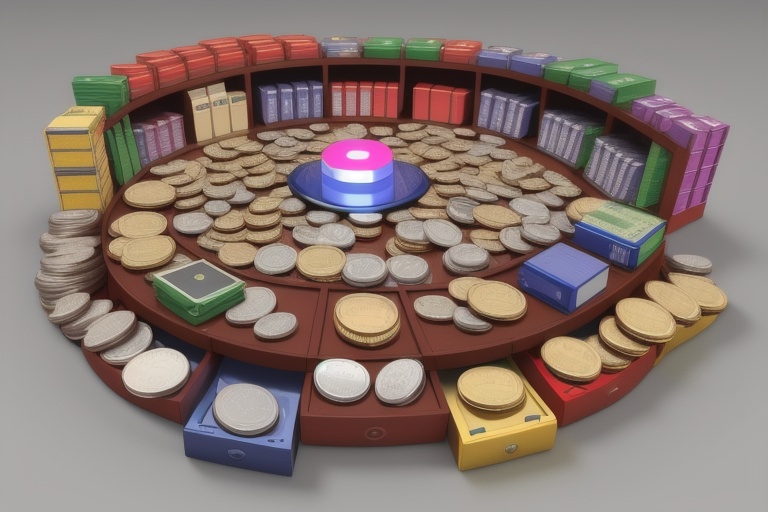Numismatics is a fascinating field dedicated to the study of currency, including coins, tokens, paper money, and related objects. This academic discipline looks beyond the monetary value of these items, digging into their history, design, production techniques, and cultural significance. For many, numismatics is not just a pastime but a window into the past, shedding light on the societies that used these currencies and the economies they supported.
Numismatics is a fascinating field dedicated to the study of currency, including coins, tokens, paper money, and related objects. This academic discipline looks beyond the monetary value of these items, digging into their history, design, production techniques, and cultural significance. For many, numismatics is not just a pastime but a window into the past, shedding light on the societies that used these currencies and the economies they supported.
A Brief History of Numismatics
The term "numismatics" comes from the French word "numismatiques," which in turn is derived from the Latin "numismatis." English speakers began using the term in the early 19th century, during a period when the study of historical coins and other currency forms became increasingly popular.
The origins of numismatics can be traced back to ancient times when historical figures like Caesar Augustus collected foreign and old coins. During the European Renaissance, an era marked by the heightened interest in classical arts and sciences, numismatics took on a formal scholarly approach.
Roles and Responsibilities of Numismatists
Modern numismatists are researchers and enthusiasts who dedicate themselves to the detailed examination of currency. Their work involves meticulous analysis of the craftsmanship involved in coinage, the processes and technology used in minting, and the socio-political context within which the currency was circulated. They often focus on rare and unique specimens, documenting their provenance and distinguishing features.
Importantly, numismatists also value the errors and quirks found in coin production. Mistakes such as double strikes or misprints can offer unparalleled insights into minting practices and are highly prized by collectors for their rarity and educational value.
The Numismatic Marketplace
Collectors often recognize the inherent value in coins that far exceeds their face value or the precious metal they contain. The market for numismatic items can see coins trading hands for sums that dwarf their original worth. A notable example is that of certain 20th-century U.S. Silver quarters, which might command prices well into the thousands due to their scarcity and historical importance.
Collecting with Purpose
For those who collect coins, there is often a reluctance to spend these pieces as regular currency. Instead, they are kept as investments or treasures, simultaneously preserving historical artifacts and their numismatic value. This practice aligns with the principle of Gresham's Law which states that people tend to save forms of money perceived as having greater intrinsic or collectible value. As such, these coins are often removed from circulation and become collectibles rather than simple currency.
Community and Education in Numismatics
There are numerous societies and associations dedicated to numismatics, such as the American Numismatic Society founded in 1858 in New York City. These organizations work to further the public’s understanding and enthusiasm for this field, hosting large collections and publishing research.
Becoming a Numismatist
Aspiring numismatists can pursue formal education and certification in the field. Various courses and programs are available, designed to equip learners with the knowledge needed to assess, appreciate, and understand the broader implications of these items of currency.
Numismatics and its Place in History
Numismatics offers an exciting route into understanding historical narratives. The study gives us perspectives on technological progress, cultural transformations, and economic trends.
Specialized Areas within Numismatics
The field of numismatics includes sub-disciplines such as notaphily, the collection of paper currency; exonumia, focusing on tokens, medals, and similar items; and scripophily, the study of historical stocks and bonds.
Steps to Becoming a Numismatist in the U.S.
Those keen on becoming professional numismatists can take actionable steps toward achieving this goal. Memberships in organizations like the American Numismatic Association (ANA), completion of specialized courses, and successful examination passes are some of the ways to gain this expertise.
Interesting Numismatic Facts
Florence, Italy holds a special place in numismatic history as it issued the first gold coins in the modern West during the 13th century. Numismatics was once the domain of royalty, but has since become accessible to all. The United States Secret Service, today known for protecting the President, was initially founded to combat counterfeit currency.
Numismatics in the Modern World
With one of the largest collections, the Smithsonian Institution is a hub for numismatic study and appreciation. The field of numismatics continues to thrive today, drawing interest from across the globe.
Beyond Coins: Numismatics and the Financial World
Numismatics is interconnected with various financial concepts such as scripophily and the study of biotechnology's impact on currency values. Understanding financial principles like Gresham's Law and the gold standard is essential to appreciating coin collecting and valuation.
Embarking on Your Numismatic Journey
Numismatics is an expansive field that covers vast periods of history and incorporates a broad array of financial considerations. Those who immerse themselves in the study of money can gain valuable insights into our shared heritage. Every collector's journey is unique, and as you delve into the world of numismatics, you'll uncover rich stories and develop an acute appreciation for these miniature artifacts of history.
Information for this article was gathered from the following source.




